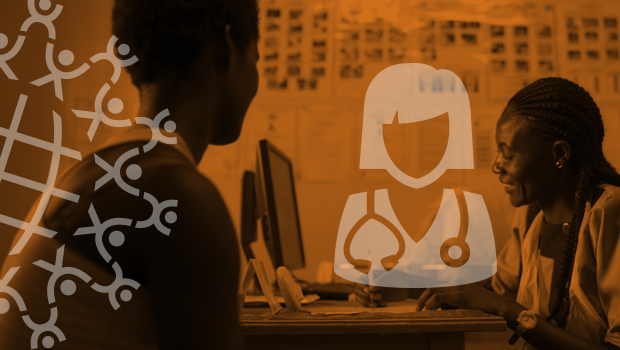Where We Work
See our interactive map


Between 2014 and 2019, Uganda added more than 43,000 health workers in 128 districts, thanks to IntraHealth International’s Strengthening Human Resources for Health (SHRH) in Uganda Activity.
In 2015, Uganda was far below the World Health Organization standard of 2.3 doctors, nurses, and midwives per 1,000 people. And while new workers were graduating from health professional schools, they weren’t filling the major service gaps because staffing structures in Uganda weren’t set up to meet the country’s increased demands and changing health needs, such as maternal health services (Uganda's maternal mortality rate is 387 per 100,000 live births) and services for the 1.4 million Ugandans living with HIV.
With funding from the US Agency for International Development, IntraHealth worked in 128 districts to increase the number of qualified health workers who can provide high-quality health services from 63,872 in 2014 to over 107,000 in 2019.
We did this by:
And we saw even more results:
After the five-year project ended in 2019, iHRIS—IntraHealth’s free and open-source software that helps countries around the world track and manage their health workforce data—was fully functional in over 70% of the project’s districts and 61% of institutions to determine staffing needs and develop long-term health worker recruitment plans.
With over 37,000 newly qualified workers at hand, SHRH was able to increase the percentage of posts filled by qualified health workers in hard-to-reach areas to 78%. At the same time, we implemented an electronic absenteeism management system to track daily attendance and helped reduce health worker absenteeism from 50% in 2015 to 8% in 2019.
We also identified gender inequality in the workplace as a major factor of the health workforce shortage and lack of service quality. We worked with the Ministry of Health, district-level leaders, and district-based partners to train health workers and institutional partners on gender and nondiscrimination. We developed and implemented strategies to mitigate all forms of workplace discrimination. By the end of the project, 76% of districts had implemented gender-mainstreaming interventions, such as ensuring recruitment teams had male and female members, ensuring promotion mechanisms were the same for men and women, and ensuring training committees had both male and female members.
Our initial assessment revealed that preservice training programs in Uganda were overcrowded, which affected the quality of both teaching and learning. And many students never attended or dropped out because they couldn’t afford it.
So we made preservice training a priority for scaling up HIV and maternal and child health services in health facilities. The additional funding we provided for the training institutions increased enrollment by 3,285 and added more teaching and learning resources for teachers and students alike. IntraHealth provided scholarships to 751 students in exchange for their service in specific districts after completing the training. By the end of the project, 518 students had graduated and 209 were still completing courses.
We developed and implemented a leadership and management eLearning program to empower managers to supervise and hold health workers accountable and to implement incentive schemes for high-performing health workers. Following the training, absenteeism rates dropped to below 10% and there were improvements in management systems, financial management, community participation, accountability, and work climate in Karamoja districts.
At the same time, we reviewed and updated curricula and created teacher guidebooks and trainee logbooks. The project brought 65 tutors and principals from 49 nursing and allied schools together for training on competency-based curricula and modern approaches for improving teaching and learning.
By September 2019, eLibraries had been installed in 62 health training institutions with over 8,000 electronic learning resources (including eBooks and video tutorials) and connections to helpful websites.
To ensure consistent and high-quality care, IntraHealth worked in 112 districts to strengthen performance management systems for 80% of health workers in the districts, including implementing standardized job monitoring and performance reviews.
The project trained 1,120 performance management resources staff for increased ownership and sustainability. They in turn reached 15,201 health workers from 892 health facilities.
The Strengthening Human Resources for Health (SHRH) in Uganda Activity was a five-year project funded by USAID in partnership with the Uganda Ministry of Health and Johnson & Johnson.



